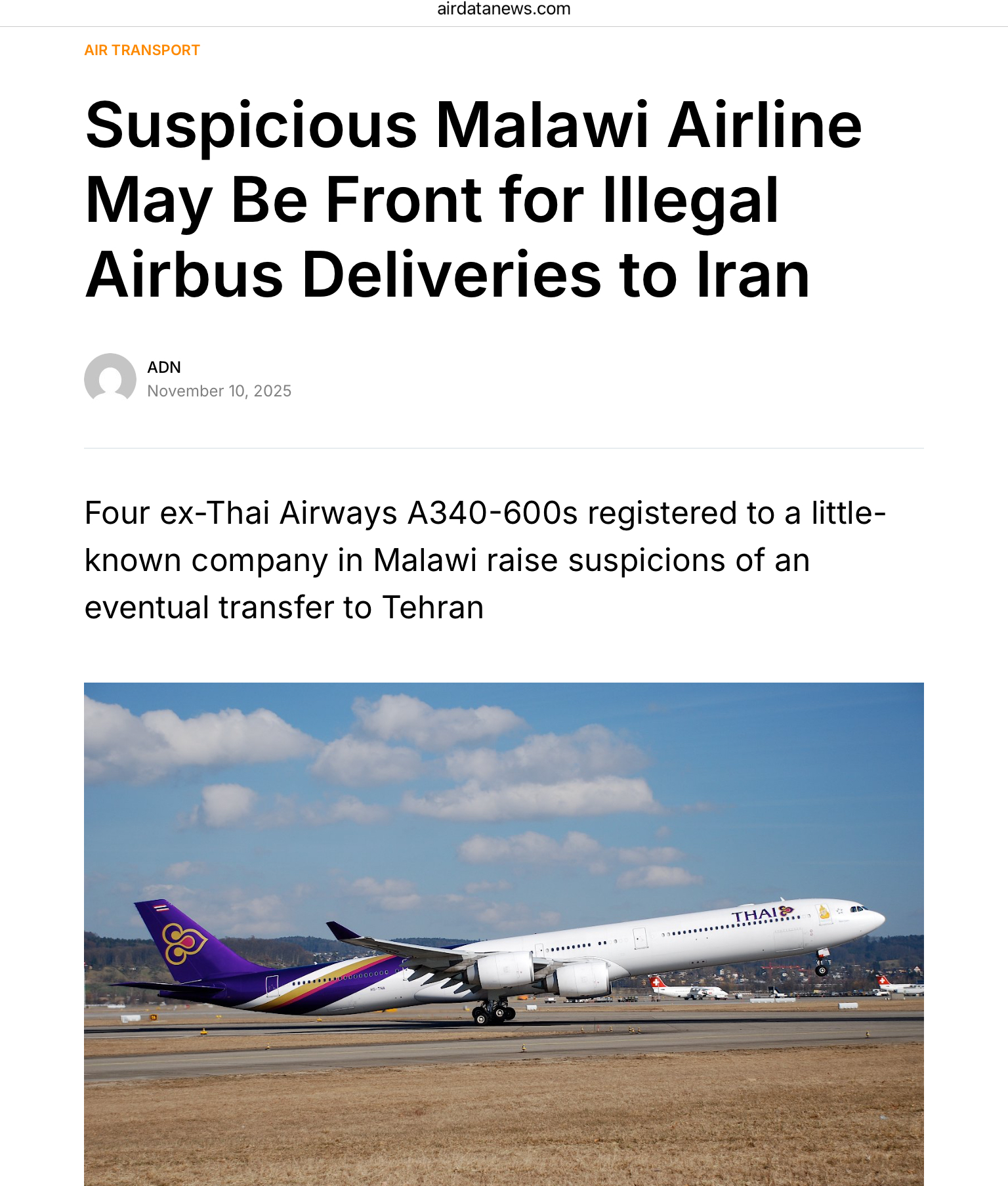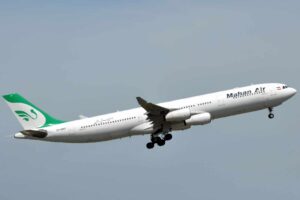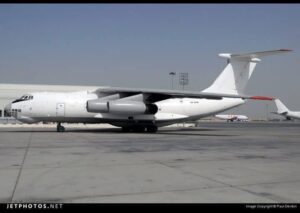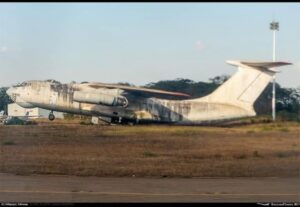
* Registered in Malawi as Rayoni Tourism Airline and is also known as Flytech Aviation Group that is alleged to have purchased four A340-600s Airbuses from Thai Airways
* With the suspicion that they will eventually be flown to Iran under false flight plans to circumvent U.S. and EU aviation sanctions
By Duncan Mlanjira
Air Data News — managed by various organisations and companies, including the International Air Transport Association (IATA) that provides air transport data and analysis — has raised red flags that an obscure airline company is registered in Malawi under the name Rayoni Tourism Airline, which is suspected to be a conduit to illegally deliver four Airbus planes to Iran.

Advertisement
The report published on October 10, indicates that the Malawi-registered company is also known as Flytech Aviation Group is alleged to have purchased four A340-600s Airbuses from Thai Airways — with the suspicion that they will eventually be flown to Iran “under false flight plans to circumvent U.S. and EU aviation sanctions”.
Malawi is thus described as one of the with lax aviation oversight and that the Airbuses are currently stored in China with analysts suspecting “they could eventually be diverted to Iran, potentially to join the fleet of Mahan Air — a carrier long accused of helping Tehran skirt international sanctions”.
“Two of the aircraft, now painted in plain white liveries and registered as 7Q-YAQ and 7Q-YAP, were recently spotted in China,” says the report. “Their previous owner was Hua An Aviation Parts, a Chinese firm, and all four A340s – formerly registered as 2-STNA, 2-STNB, 2-STNE, and 2-STNF – were previously stored in Taiyuan, China.”

Records show that these aircraft briefly passed through Guernsey’s registry in early 2024 before disappearing months later, apparently used only to facilitate their movement from Thailand to China. Now, with their registration in Malawi, analysts suspect the African nation is being used as a convenient flag of convenience to mask the jets’ real destination.
Adding to the skepticism, Flytech’s declared fleet plan—two Embraer ERJ-145s, two Beechcraft 1900s, and four Cessna Caravans, makes no mention of widebody aircraft. The company’s only known operation so far was leasing a McDonnell Douglas DC-9 to Somali carrier Aerojet.
Air Data News further alludes to that experts argue that “acquiring four A340-600s — massive, fuel-thirsty aircraft long retired by most airlines — makes no business sense for a startup carrier [Flytech Aviation Group] with limited resources and no long-haul network”.
“Instead, the move fits a pattern Iran has used before — obtaining older Western-built airliners through intermediaries, re-registering them in countries with lax oversight, and then flying them to Iran under false flight plans.
“If confirmed, the case would represent yet another attempt by Tehran to circumvent U.S. and EU aviation sanctions, using obscure front companies and shadowy registration changes to replenish its aging long-haul fleet,” says the report.

Advertisement
Air Data News is also affiliated to Airlines for America (A4A) — representing major US airlines and provides industry data; Federal Aviation Administration (FAA) that regulates and oversees the aviation industry in the US, providing data and statistics; Eurocontrol that manages air traffic in Europe and provides data and analysis; and Air Cargo News, that publishes news and data on the air cargo industry.
These organisations provide data, analysis, and insights on the aviation industry, including air traffic, cargo, and passenger trends.
Questions are being raised whether the Malawi Department of Aviation is in complicit with this illegal transaction as the country seems to really have lax aviation management oversight as discovered recently of a case of an Ilyushin Il-76TD, registration 3X-GFR that was abandoned at Kamuzu International Airport (KIA) since 2011.

Top picture taken in 2011 at Sharjah airport and the other one taken at KIA long after being abandoned.—Source: internet searches

When the issue of the Ilyushin Il-76TD went viral on social media, Secretary to the Ministry of Transport & Public Works, Eng. David Mzanda issued a public notice on October 23, 2025 of the government’s decision to confiscate the abandoned aircraft that stayed idle at KIA’s cargo terminal for nine years now.
The Ministry thus declared it as an abandoned property and in accordance with the relevant law, the government gave the last known owner, Gravia 30, days notice from October 23 to take necessary steps regarding its removal by paying US$45,014 as accumulated parking fees due to its prolonged stay at KIA without being claimed.
But reports indicated that the Ilyushin Il-76TD, was operated by GR AVIA (UAE) under Guinea aviation registry that arrived at KIA on November 12, 2011 from Cape Town, South Africa that was chartered to transport freight into Sudan.
But it developed an engine fault and permission to land in other African countries was denied but KIA cleared it to land as it was running out of fuel. The crew was allowed access for hotel accommodation but they disappeared by flying out of the country.
The cost of repair was deemed uneconomical, thus it was abandoned and it became unserviceable as it remained grounded on the apron and it is reported that in 2013, an engineer arrived from Russia to dismantle the aircraft’s avionics, “valuable electronic systems such as the navigation and communication instruments”.

Since then, the airframe has been left derelict and having gone viral on social media, the Ministry of Transport & Public Works thus declared it as abandoned.
After expiry of the 30 days, the Ilyushin Il-76TD — which is still an iconic sight for plane spotters and aviation enthusiasts — the government would claim ownership for possibly to cannibalise it more for scrap.
Reports indicate that the airline, GR AVIA (UAE), “may have decided it wasn’t worth investing more money to repair the aircraft, especially if it was nearing the end of its service life”.



Advertisement
